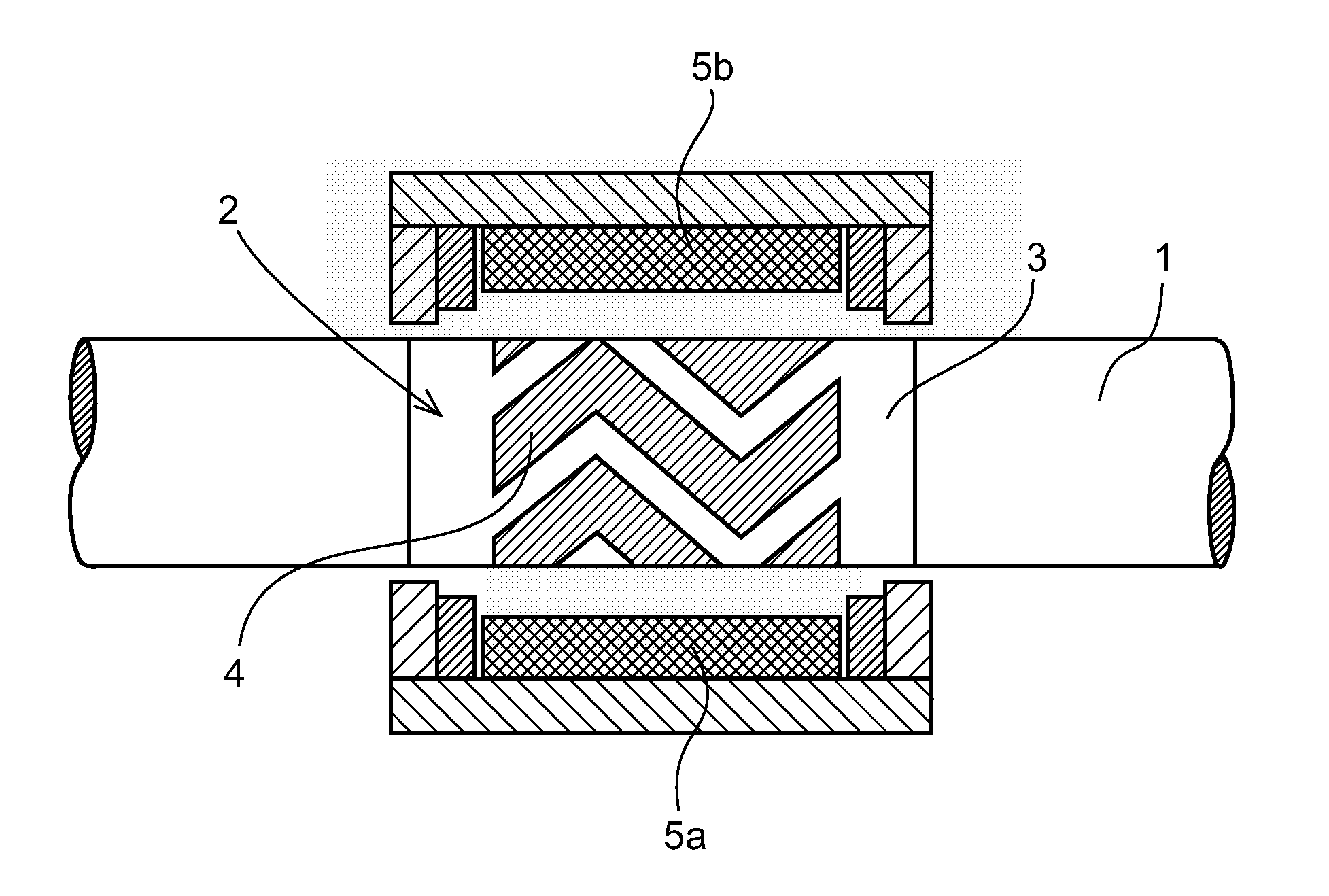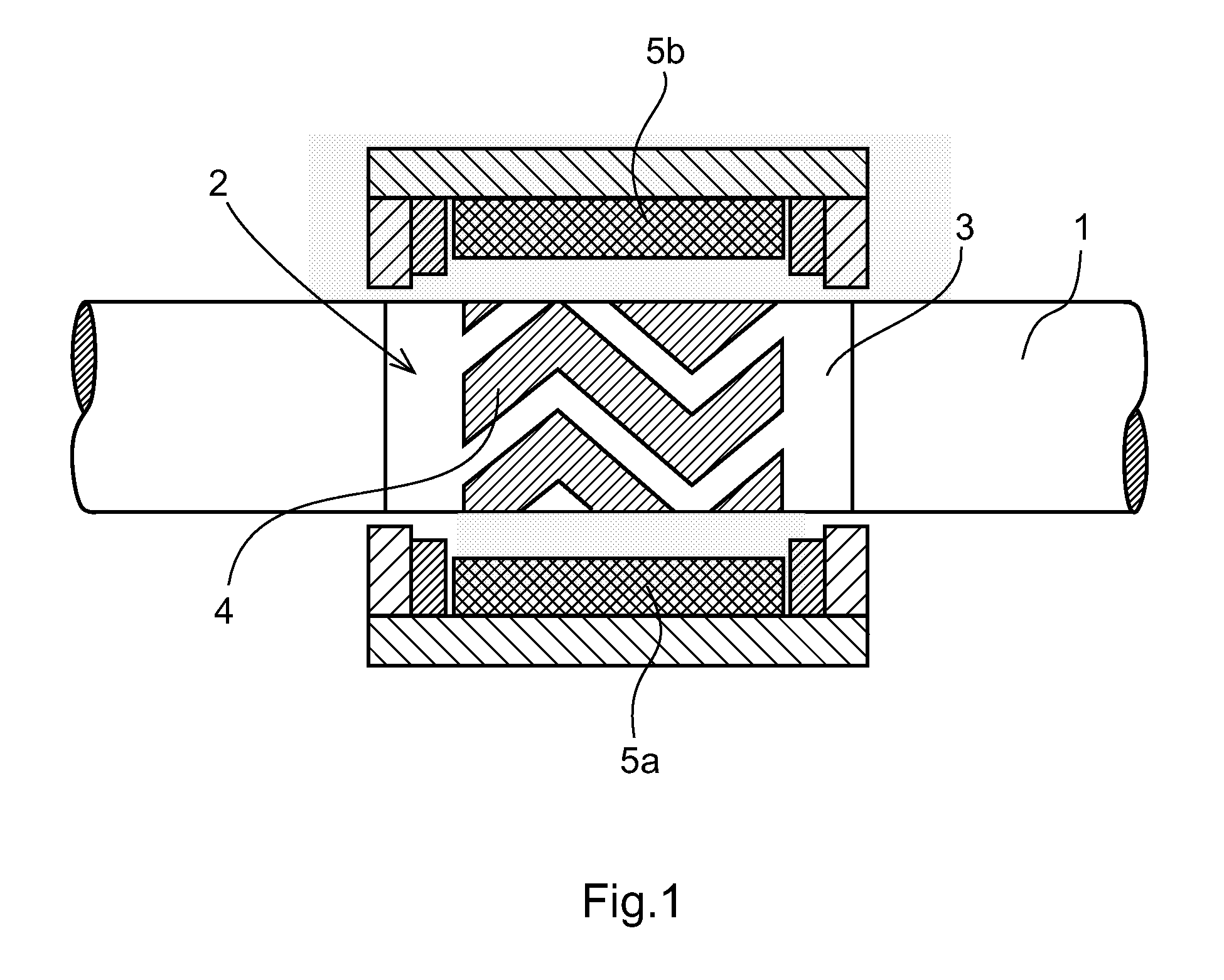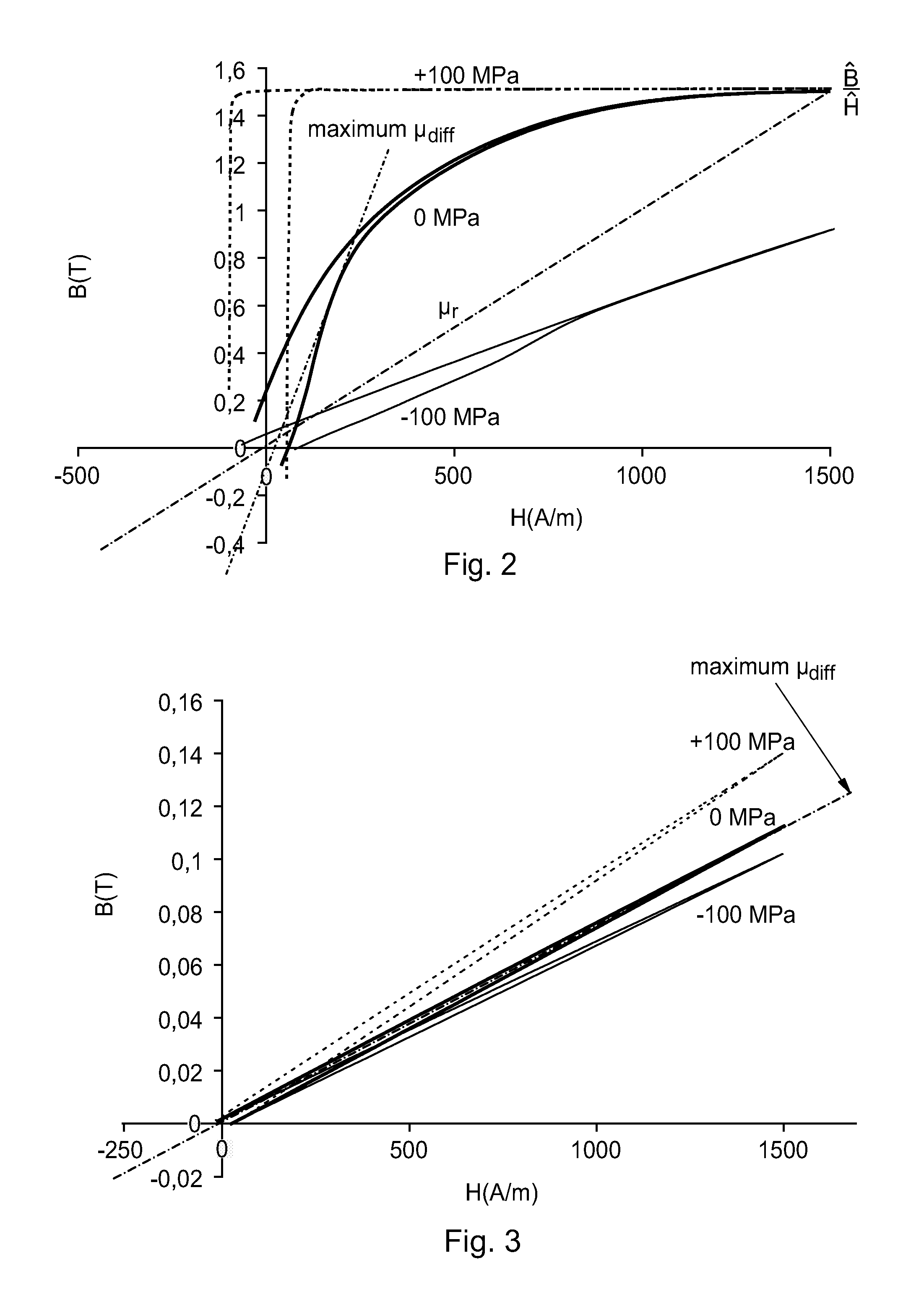Measuring device including a layer of a magnetoelastic alloy and a method for production thereof
- Summary
- Abstract
- Description
- Claims
- Application Information
AI Technical Summary
Benefits of technology
Problems solved by technology
Method used
Image
Examples
Embodiment Construction
[0032]FIG. 1 shows an example of a measuring device including a load-carrying member, in the form of a rotary shaft 1, which is arranged to transmit a torque in any kind of mechanical transmission. The device is adapted to measure torques applied to the load-carrying member. The load-carrying member is made of a material with sufficient stiffness, for example of steel. A magnetoelastic region 2 is provided on the shaft 1. The magnetoelastic region 2 comprises a first layer 3 of a magnetoelastic material, which has a substantially continuous extension and thickness in said region 2. In this embodiment, the magnetoelastic layer 3 is formed by plating and is mainly composed of iron and nickel. A second layer 4 in the form of a continuous strip is provided on the first layer 3. The second layer 4 forms a surface pattern on the first layer 3. Further, the measuring device includes windings 5a-b supplying the measuring device with an alternating magnetization field. This type of measuring...
PUM
 Login to View More
Login to View More Abstract
Description
Claims
Application Information
 Login to View More
Login to View More - R&D
- Intellectual Property
- Life Sciences
- Materials
- Tech Scout
- Unparalleled Data Quality
- Higher Quality Content
- 60% Fewer Hallucinations
Browse by: Latest US Patents, China's latest patents, Technical Efficacy Thesaurus, Application Domain, Technology Topic, Popular Technical Reports.
© 2025 PatSnap. All rights reserved.Legal|Privacy policy|Modern Slavery Act Transparency Statement|Sitemap|About US| Contact US: help@patsnap.com



